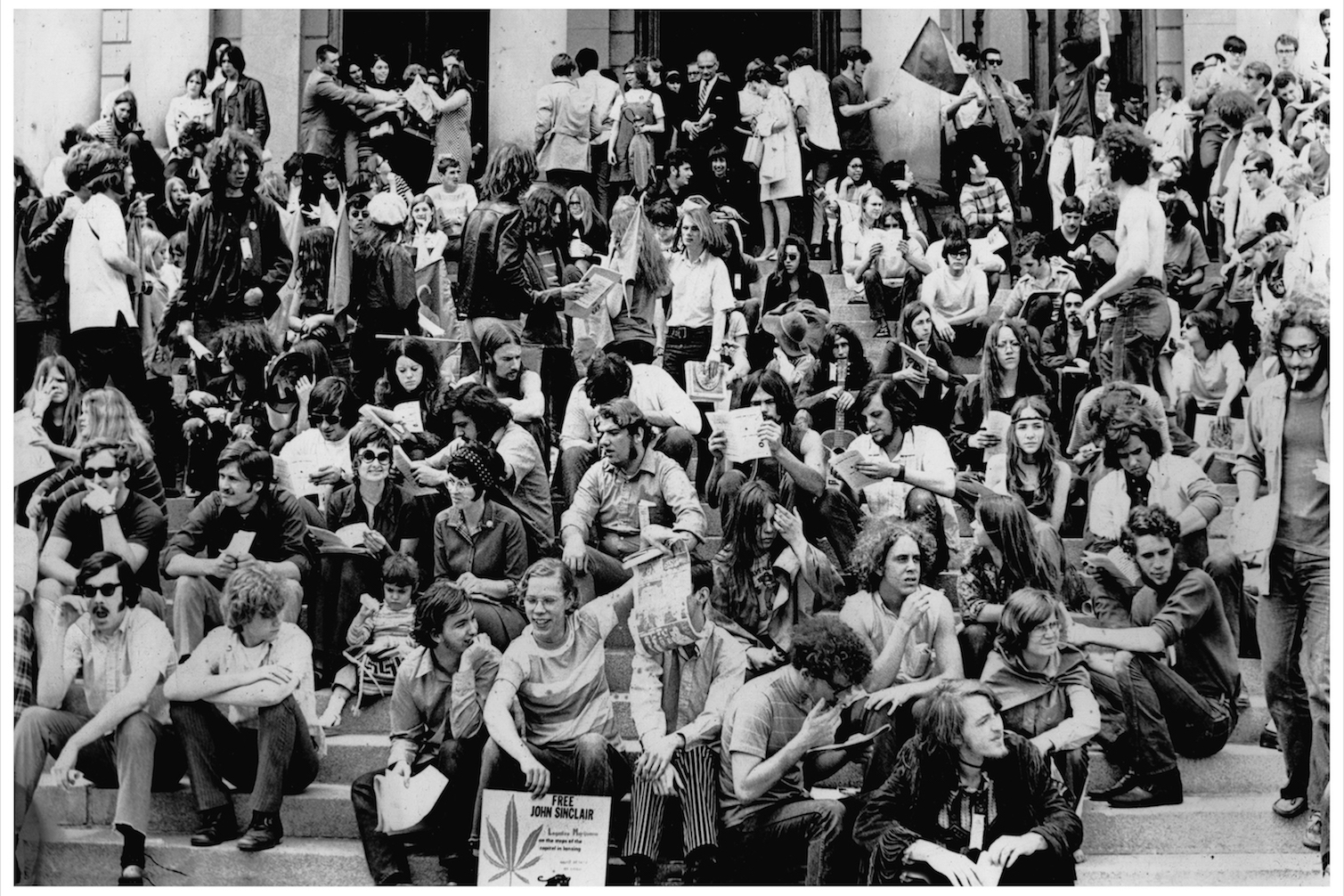Detroit’s defiant underground activists of the ‘60s and ‘70s
- Text by Miss Rosen
- Photography by Leni Sinclair

In 1959, Leni Sinclair, then 19, fled her native East Germany for the United States, settling in Detroit to study at Wayne State University where she became interested in politics. She joined Students for a Democratic Society very early on, becoming one of two members citywide participating in the New Left movement that would soon take the nation by storm.
In 1964, she met poet and jazz critic John Sinclair, who would become her husband and collaborator in the creation of the Detroit Artists Workshop – a network of communal houses, print shop, and performance space, where Leni photographed jazz legends like John Coltrane, Miles Davis, and Thelonious Monk, as well as proto-punk band MC5.

Members of the White Panther Party in Lansing, Michigan, 1970
“We were living outside the system, starting to create something for ourselves, and not the predominant culture, which was too stiff,” Sinclair says with a laugh. “We wanted to have a place without restrictions. That to me was more radical than anything I had experienced in my life.”
But paradise wouldn’t last. Police raided the Detroit Artists Workshop in 1965, arresting John Sinclair on marijuana charges. “While he was in jail, the whole country changed. All of a sudden there was this big phenomenon called the hippies,” Sinclair recalls.
“At first, we thought the ‘hippies’ was a put-down, a name for wannabe hipsters into jazz and weed that didn’t make it, so we didn’t really embrace ourselves as being hippies. But the police labelled my husband as the ‘King of the Hippies,’ making me the ‘Queen of the Hippies.’”
Sinclair laughs fondly at the memory then says, “Hippies were a force. They were not overtly political like SDS but they sure were influencers. They opened up society not to be so provincial.”
In the new exhibition and book, Motor City Underground, Sinclair revisits her photographs documenting Detroit’s radical artist/activist scene of the 1960s and ‘70s. “It was a fun time, until 1967 and the urban rebellion in Detroit,” Sinclair says of the four-day uprising that devastated the city that July.

Two boys at Detroit’s state fairground

Portrait, interior with map and poster, ‘National Heroes and Martyrs of A People’s Revolution’
“People who looked like hippies would be stopped and searched just like Black people have been forever. [Police would say] ‘What are you doing in this neighbourhood? Who are you?’ All those kinds of things,” Sinclair says.
“Our living quarters were firebombed and we couldn’t live there anymore. We had to flee overnight to save our lives and we moved to Ann Arbor. But there was a lot of resistance when we arrived because no matter how progressive the university was, the citizens were a conservative lot. They had a demonstration against us carrying signs like, ‘Sin, Like in Sinclair.’”
While living in Ann Arbor, the Sinclairs created the White Panther Party in November 1968 to support the work of the Black Panther Party. Although they won a landmark U.S. Supreme Court decision in 1972 against the government for illegal surveillance, their name created misunderstandings and was later changed to the Rainbow People’s Party.
Reflecting on her experiences, Sinclair says, “Everybody has to do what their heart dictates. Be yourself, do what you need to do, and document it.”

Protestors at anti-war march

Crowd in Ann Arbor, Michigan, 1970

Wayne Kramer in Ann Arbor, Michigan photograph, 1969

Members of the White Panther Party and the Weathermen at The Fifth Estate, 1970

Public display of poem by Medgar Evers
Leni Sinclair: Motor City Underground is on view at the Museum of Contemporary Art in Detroit through April 18, 2021.
Follow Miss Rosen on Twitter.
Enjoyed this article? Like Huck on Facebook or follow us on Twitter.
Latest on Huck

Tender, carefree portraits of young Ukrainians before the war
Diary of a Stolen Youth — On the day that a temporary ceasefire is announced, a new series from photographer Nastya Platinova looks back at Kyiv’s bubbling youth culture before Russia’s February 2022 full-scale invasion. It presents a visual window for young people into a possible future, as well as the past.
Written by: Hannah Bentley

Analogue Appreciation: 47SOUL
Dualism — In an ever more digital, online world, we ask our favourite artists about their most cherished pieces of physical culture. Today, it’s Palestinian shamstep pioneers 47SOUL.
Written by: 47SOUL

Meet the hair-raised radicals of Berlin’s noise punk scene
Powertool — In his new zine, George Nebieridze captures moments of loud rage and quiet intimacy of the German capital’s bands, while exploring the intersections between music, community and anti-establishment politics.
Written by: Miss Rosen

Amid tensions in Eastern Europe, young Latvians are reviving their country’s folk rhythms
Spaces Between the Beats — The Baltic nation’s ancient melodies have long been a symbol of resistance, but as Russia’s war with Ukraine rages on, new generations of singers and dancers are taking them to the mainstream.
Written by: Jack Styler

Uwade: “I was determined to transcend popular opinion”
What Made Me — In this series, we ask artists and rebels about the about the forces and experiences that shaped who they are. Today, it’s Nigerian-born, South Carolina-raised indie-soul singer Uwade.
Written by: Uwade

Inside the obscured, closeted habitats of Britain’s exotic pets
“I have a few animals...” — For his new series, photographer Jonty Clark went behind closed doors to meet rare animal owners, finding ethical grey areas and close bonds.
Written by: Hannah Bentley

